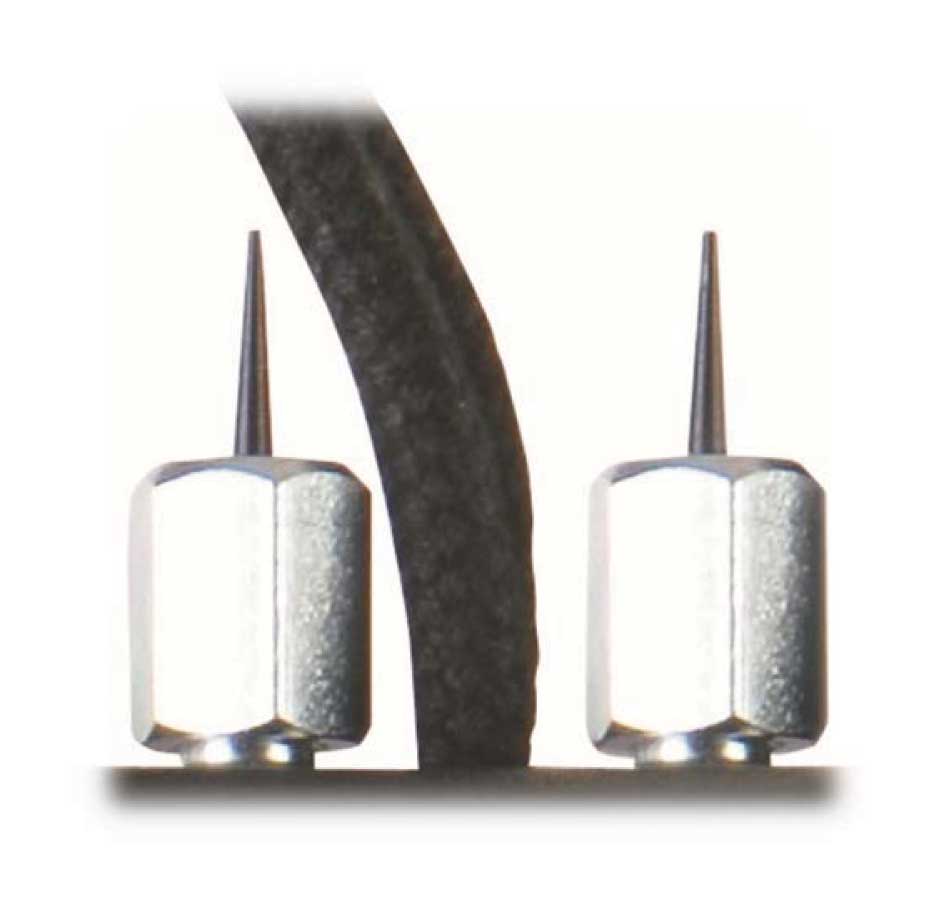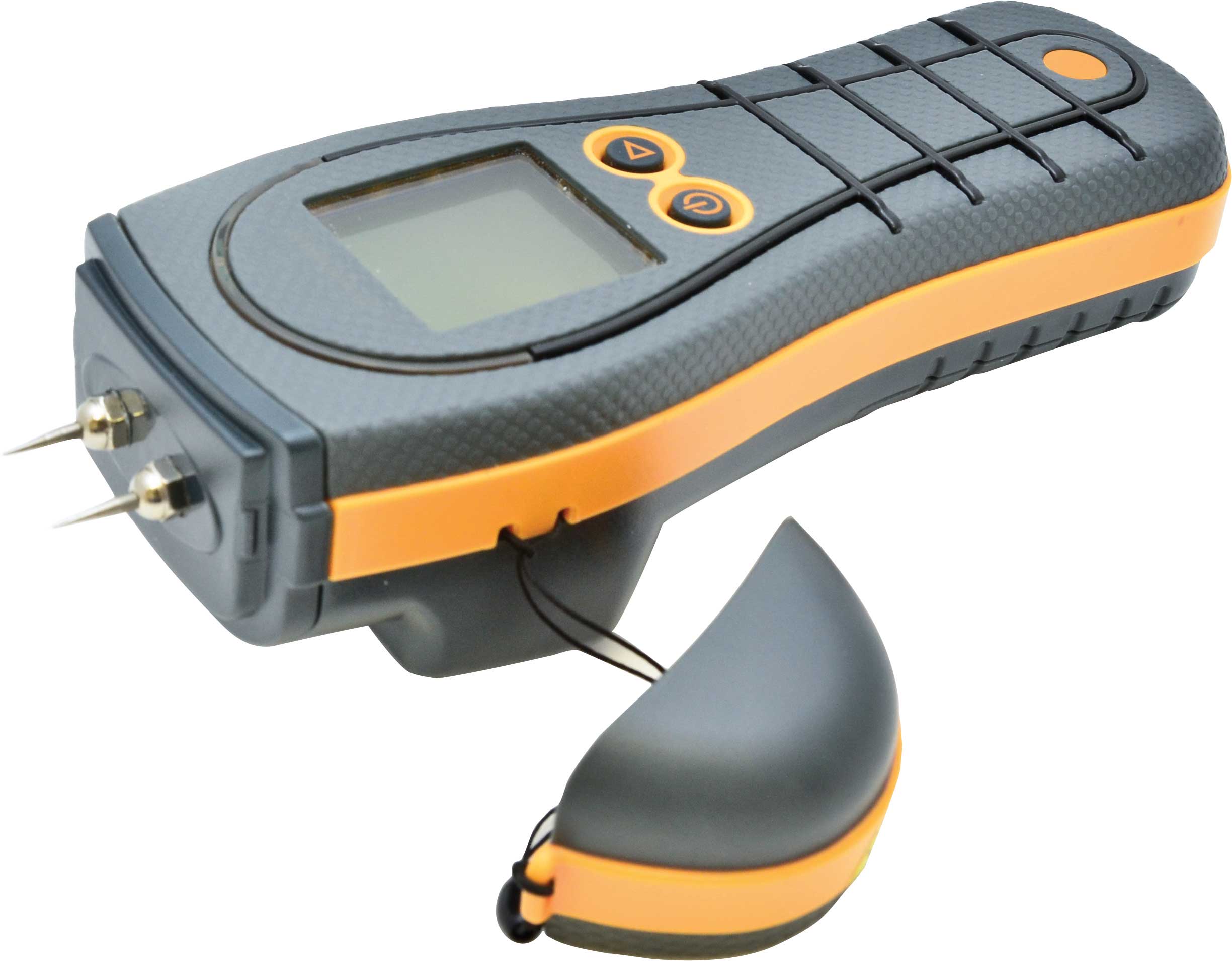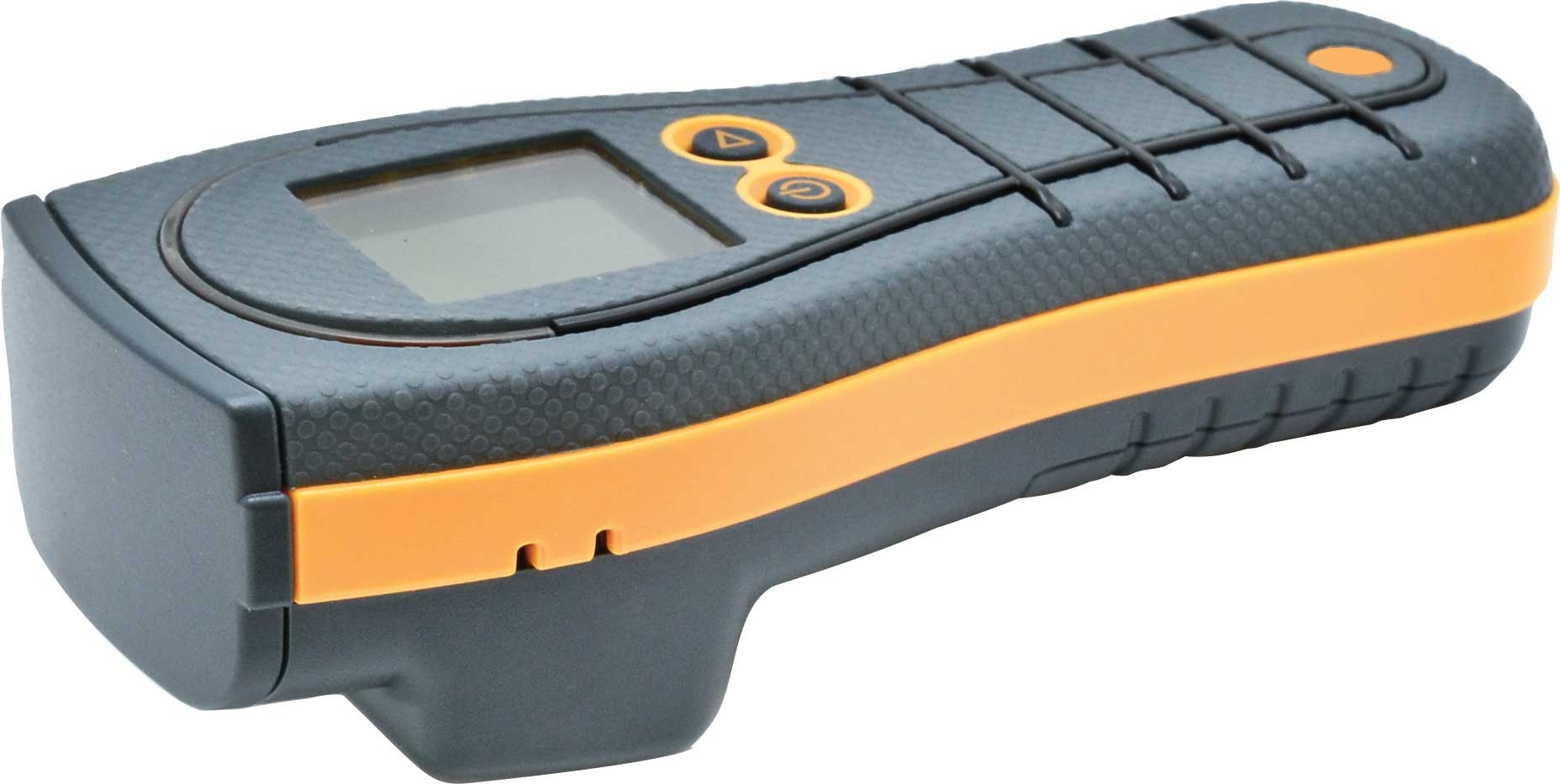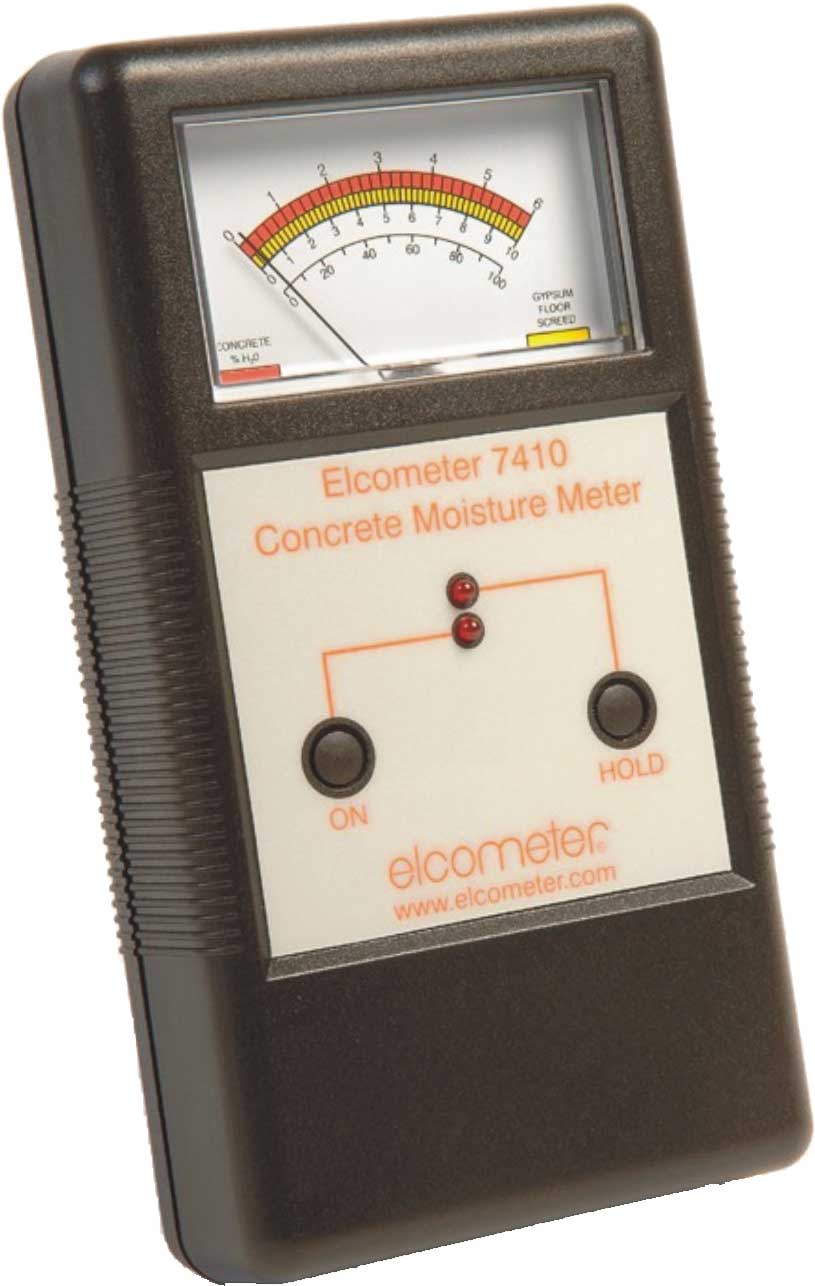
Moisture Measurement
Having taken all necessary climatic measurements, including surface temperature, the coating can be applied to a steel structure providing the specification parameters of the coating are met.
On porous materials such as concrete, plaster, brick or wood, the moisture content of the substrate should be measured. This is important because the presence of moisture within a material will result in poor adhesion, premature coating failure and poor appearance. It is not sufficient to simply ensure that the surface is dry by touch. The surface of the substrate is often the driest point due to evaporation. It is important to establish the moisture content within the substrate itself.
For example, when powder coating wooden panels, if the wood (or MDF) has too high a moisture content as the panel passes through the oven the moisture will be heated, generating steam and causing significant coating finish issues. Applying a coating to a concrete floor which is too damp can also cause premature adhesion failure. Moisture meters have been developed to specifically determine the level of moisture in a substrate and come in two forms.
Pin-Type Moisture Meter
Gauges like the Elcometer 7000PS Digital Moisture Meter measure moisture using built-in electrode pins. These pins are pushed firmly into the surface of the substrate being measured and provide the percentage of Wood Moisture Equivalent (%WME) in the substrate by measuring the electrical resistance between the pin electrodes.
Typically, moisture meters provide a value of up to 42% based upon the moisture in the wood and a percentage of comparative value to wood for other building materials. Pin type gauges are ideal for determining the exact location of moisture build-up.
Pinless, Contact-Type Moisture Meters
Whilst pinless meters typically measure the moisture content faster (and without creating holes), they do require a relatively flat surface. This is because the sensors are mounted on the base of the gauge.
The Elcometer 7000S Concrete Moisture Meter has a non-invasive probe that emits a radio frequency to penetrate the surface to detect moisture. It is a detector of the presence of moisture for comparative purposes, rather than a measurer of the amount of moisture present. Ideal for rapid surveys of solid walls, floors and ceramic tiles.
Pinless gauges, for example, the Elcometer 7410 Concrete Moisture Meter, are therefore ideal for measuring the moisture content of concrete. These gauges can typically measure the moisture content up to 25mm (1 inch) from the surface.
The pin type (invasive instrument) may not be the easiest or best option as the pins may be difficult to insert into the concrete, and there is potential for the surface to be damaged. Using this method, the length of the pins dictates to what level within the product moisture can be measured. Moisture can only be measured across a depth equivalent to the length of the pins.
Using low frequency signals, the spring-loaded electrodes are pressed on to the surface being measured. This ensures the electrodes make good contact with the surface of the concrete being measured. The impedance is measured, compared to the impedance in acceptably dry concrete, and from that a percentage moisture content of the concrete from 0-6% is given.
When using an electronic moisture meter, it is important to bear in mind several factors which will affect readings;
-
- The electrical resistance of wood varies from species to species and with wood density. This can influence meter readings for the same moisture content and can also affect readings taken on samples of similar species from different origins. Species adjustment tables are available to make the relevant corrections.
- Readings may be affected by certain flame retardants, preservatives, aluminium paint and by contamination of salt water. Readings on such wood should be treated as indicative readings only.
- Surface moisture due to wetting or condensation can affect readings. Again, readings on such wood should be treated as indicative readings only.
- Materials will have different capabilities to hold moisture in a satisfactory state. Surface coatings, such as paint, will affect the ability of the material to absorb moisture.
- Due to the cellular structure of timber, readings will be less accurate taken in the end grain.
- Composite materials such as plywood will give artificially high readings due to adhesive content.
- Meter readings can be affected by wood temperature. The Elcometer 118/2, for example, is calibrated at 20°C (68°F). At higher wood temperatures the meter readings are higher and at lower wood temperatures the meter readings are lower. A temperature adjustment chart should be used to correct for temperature.
- The conductivity of water varies with its purity. If the material being tested has been in contact with water with high salt content, conductivity (and hence the reading) will be higher.
- Certain surface treatments may be conductive. Residue may contain carbonaceous material or have a misleadingly high moisture content. Wood treatments consisting of a salt-based liquid will also modify conductivity.
- Density may vary throughout a material; knots in wood will produce readings different from the surrounding areas.
- The moisture content of a material may vary across its section due to various factors including:
- Gravity and/or Capillary Action
- Evaporation: The bottom of a material may well be wetter due to evaporation from the top surface. Conversely, if the material has been covered with an impervious membrane, the top may be wetter.
As can be seen above, it is extremely difficult to obtain precise and quantitative moisture content readings using an electronic moisture meter. Their main use is as an easy-to-use, convenient method of verifying approximate moisture content with the ability to ‘compare’ the moisture content of like materials.




